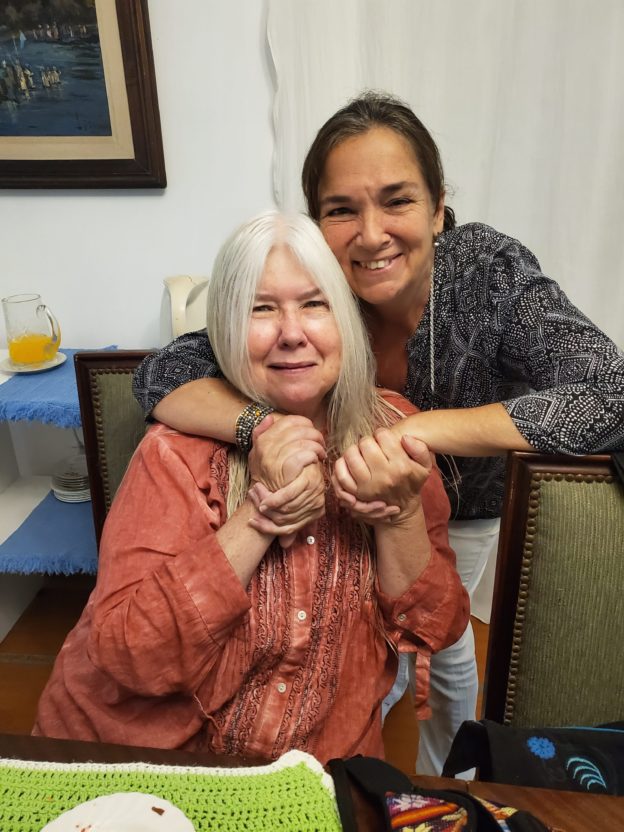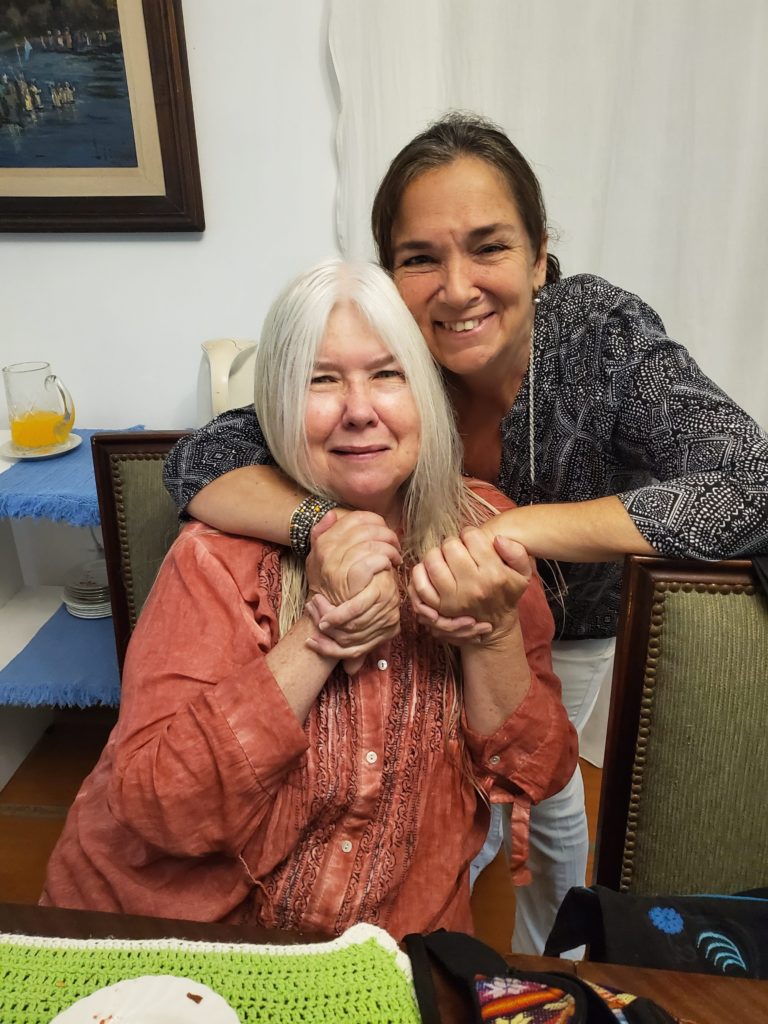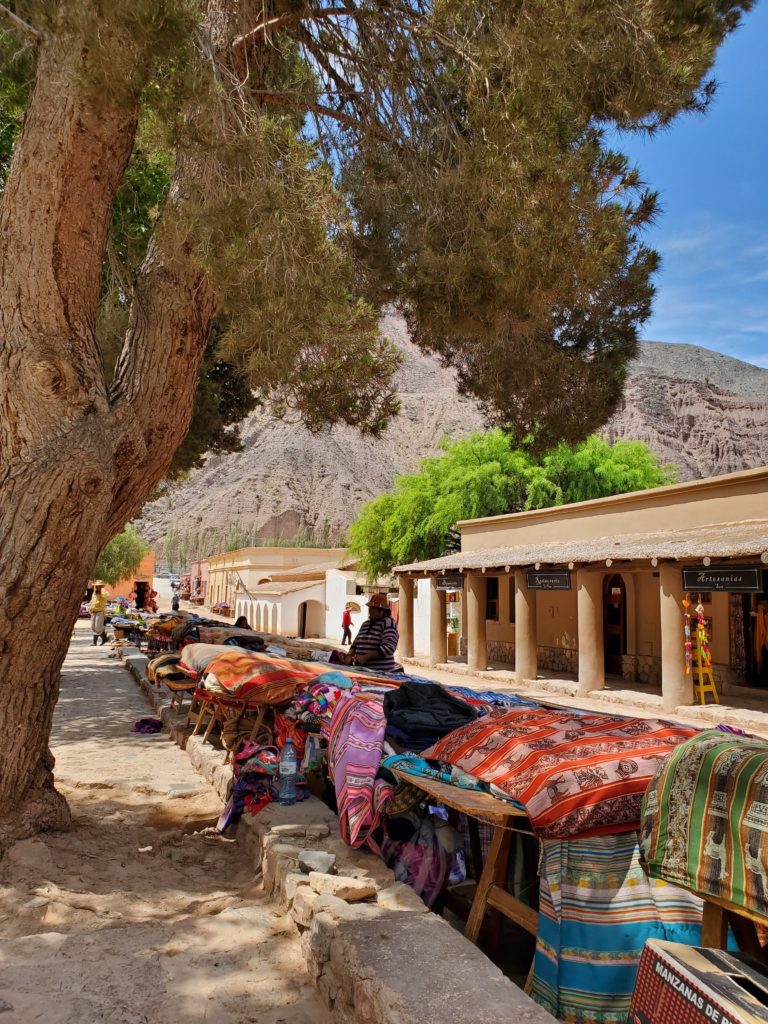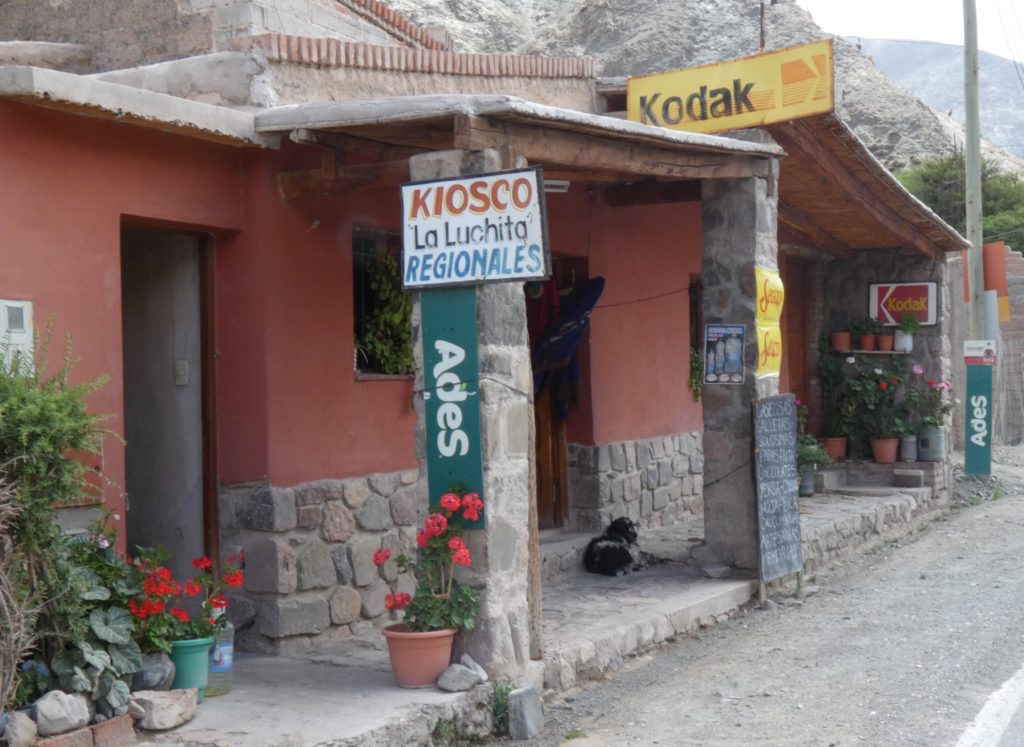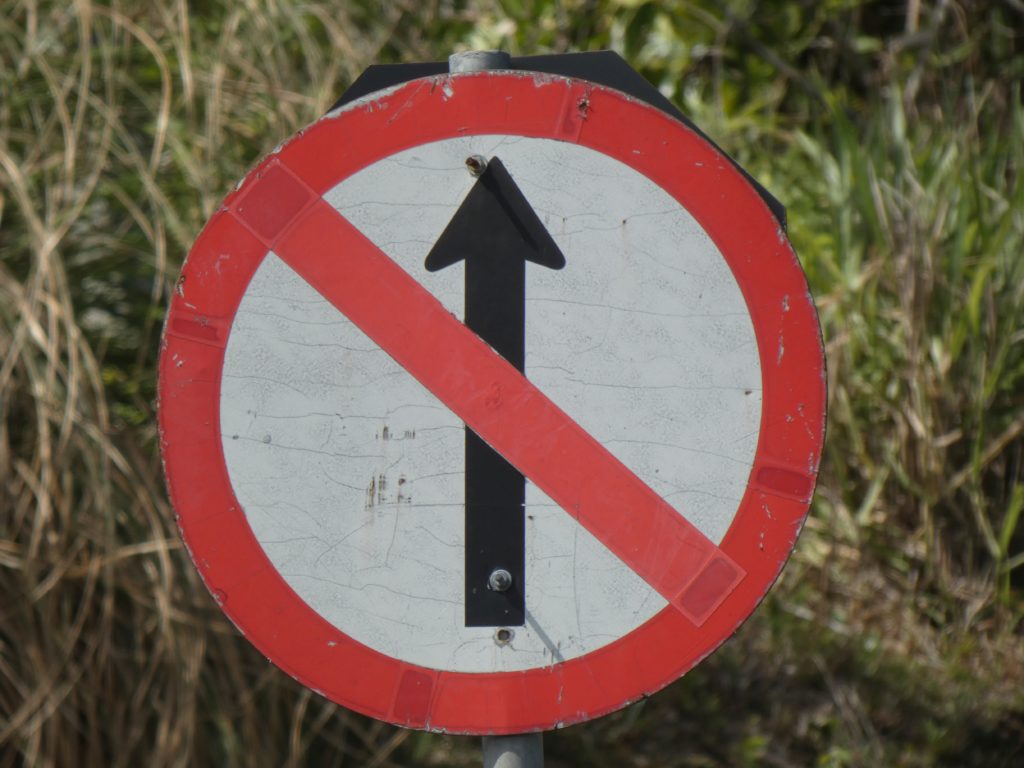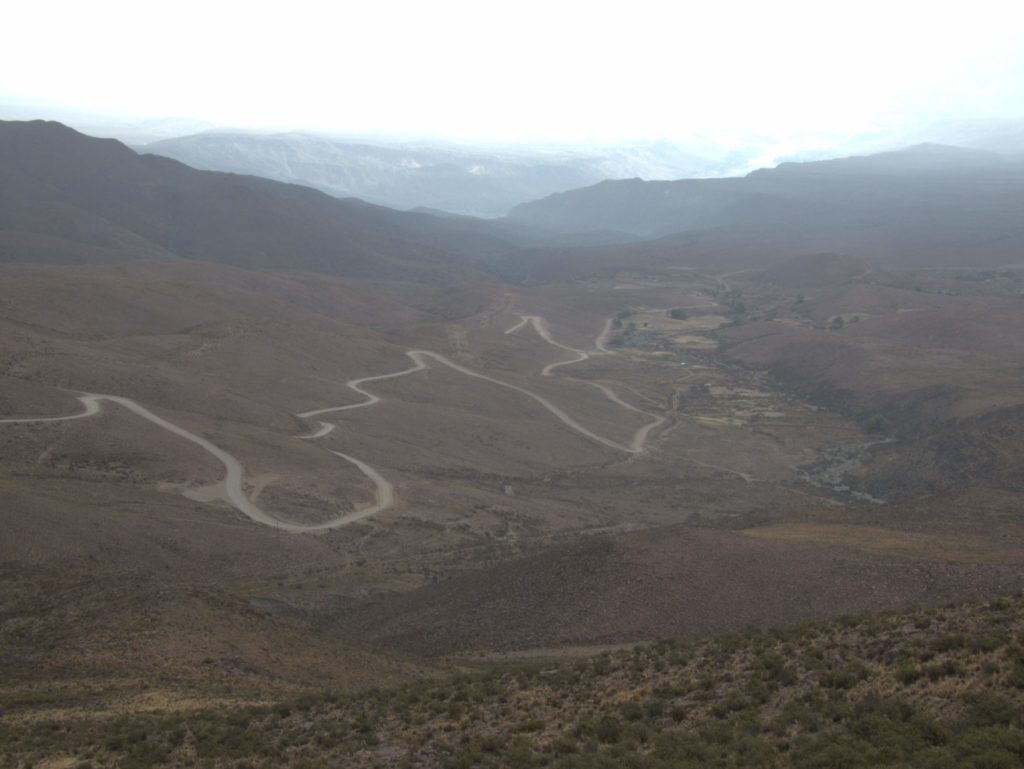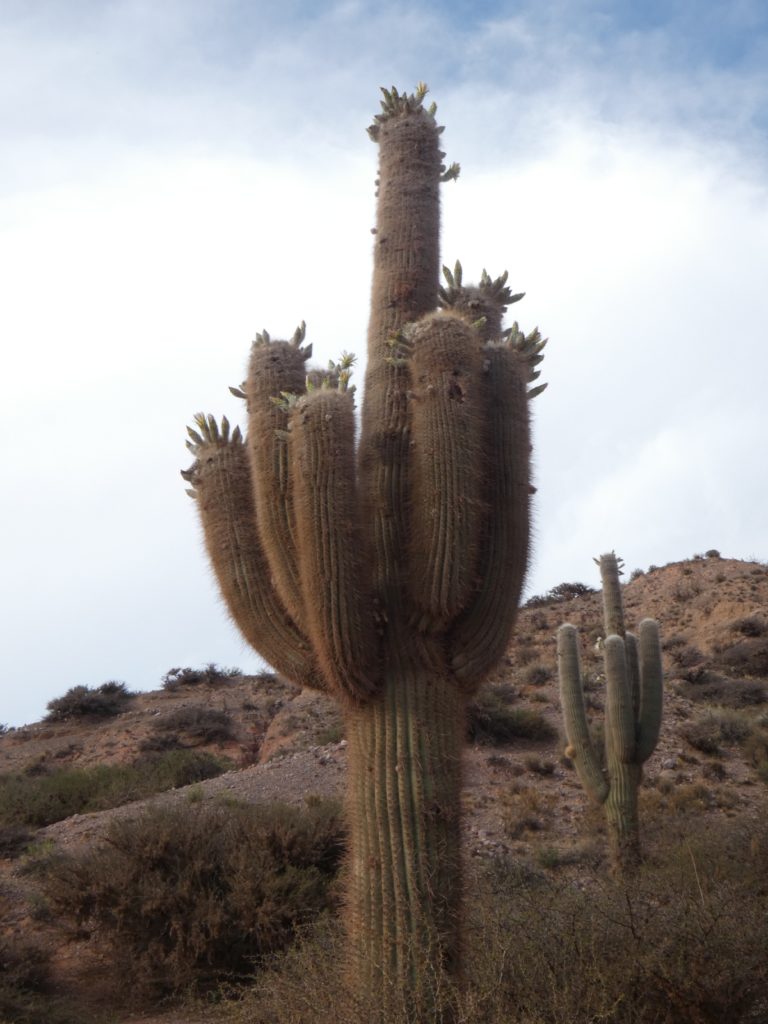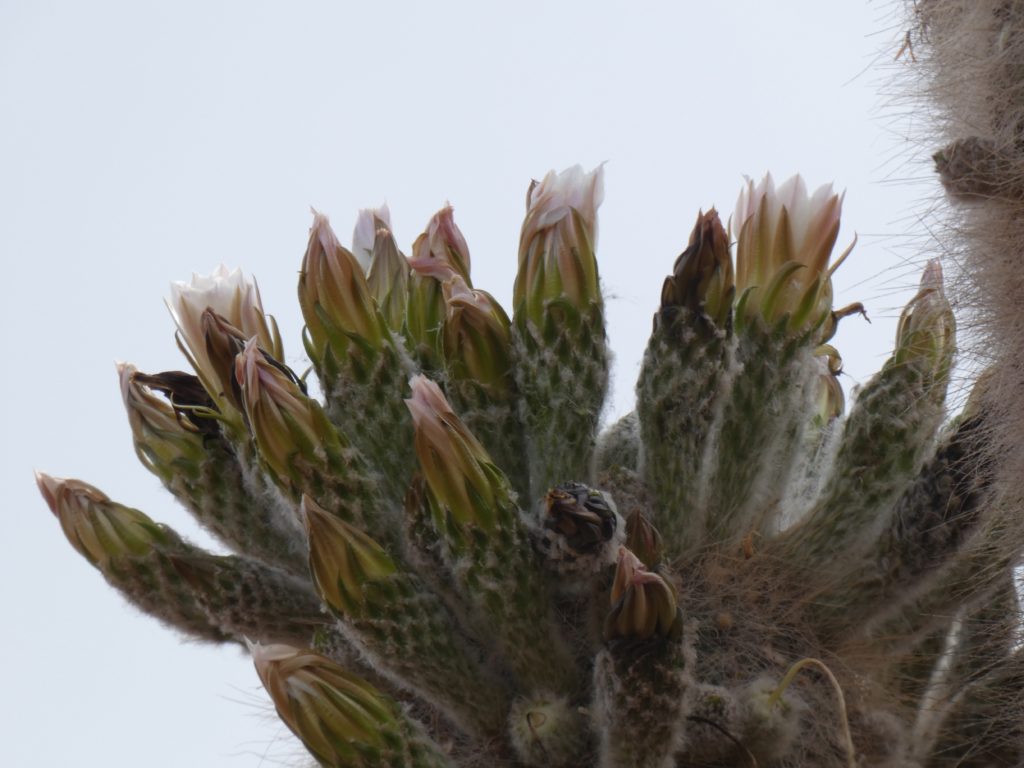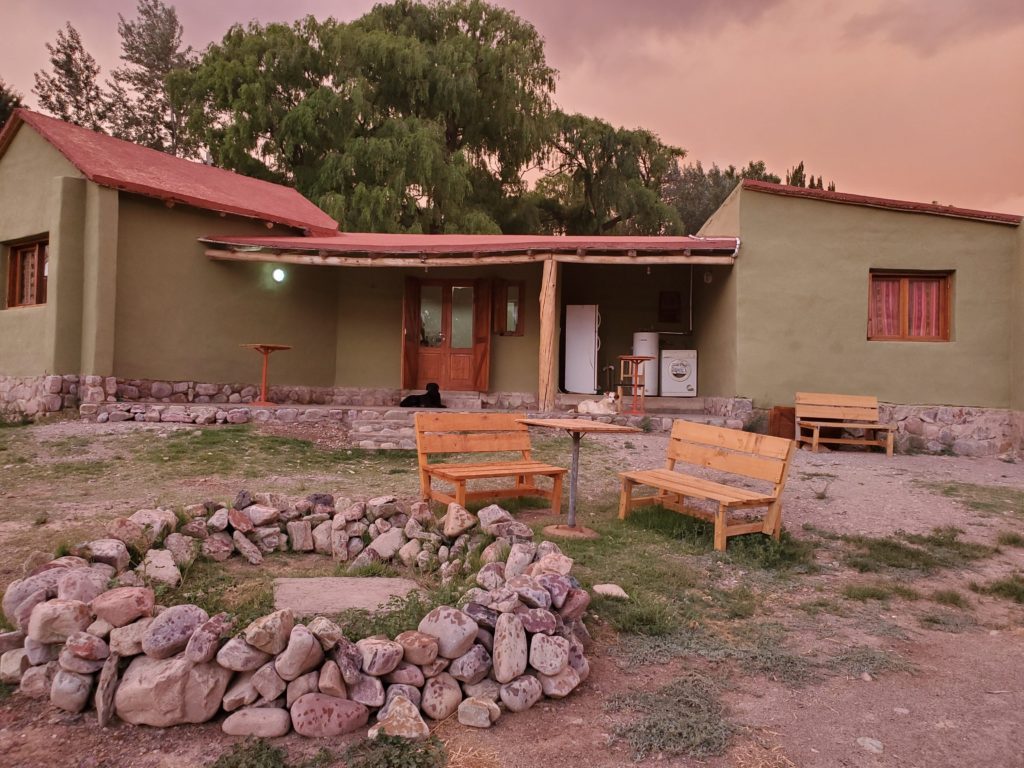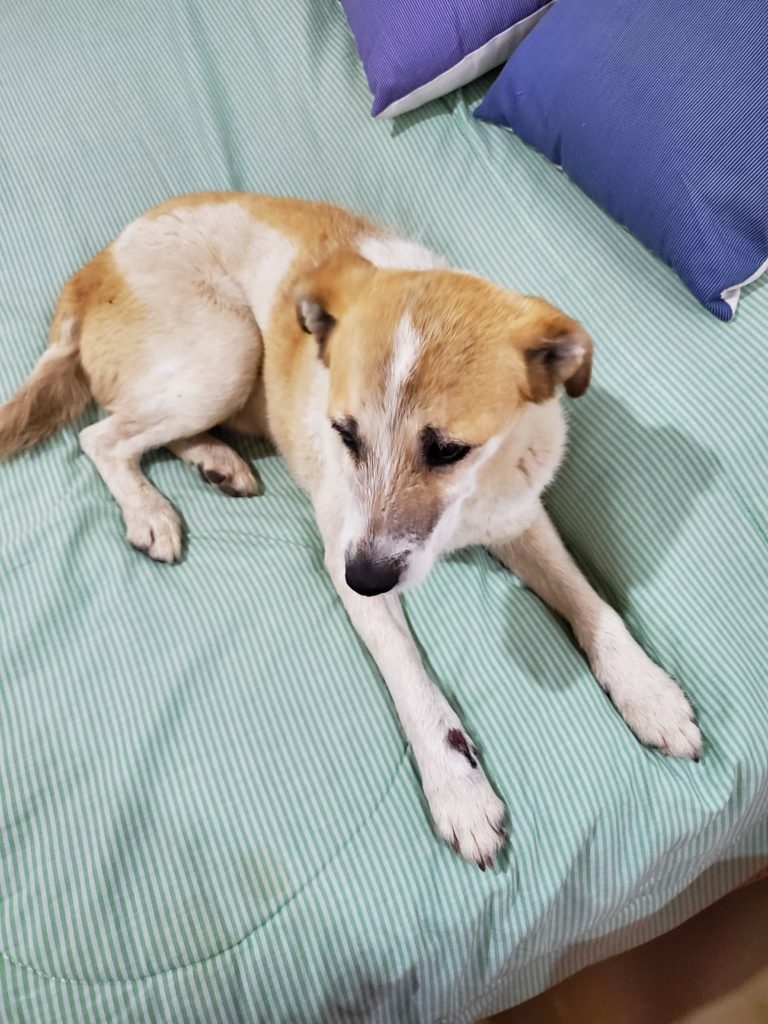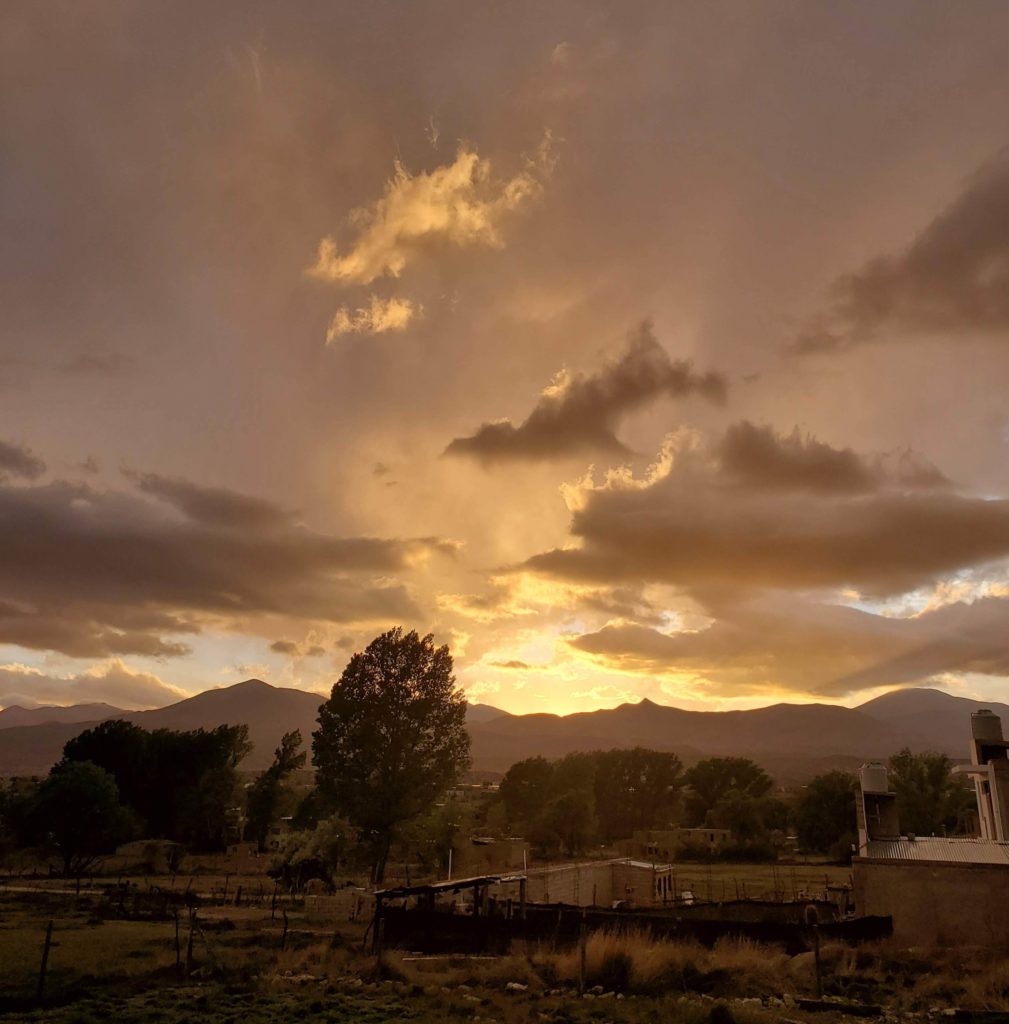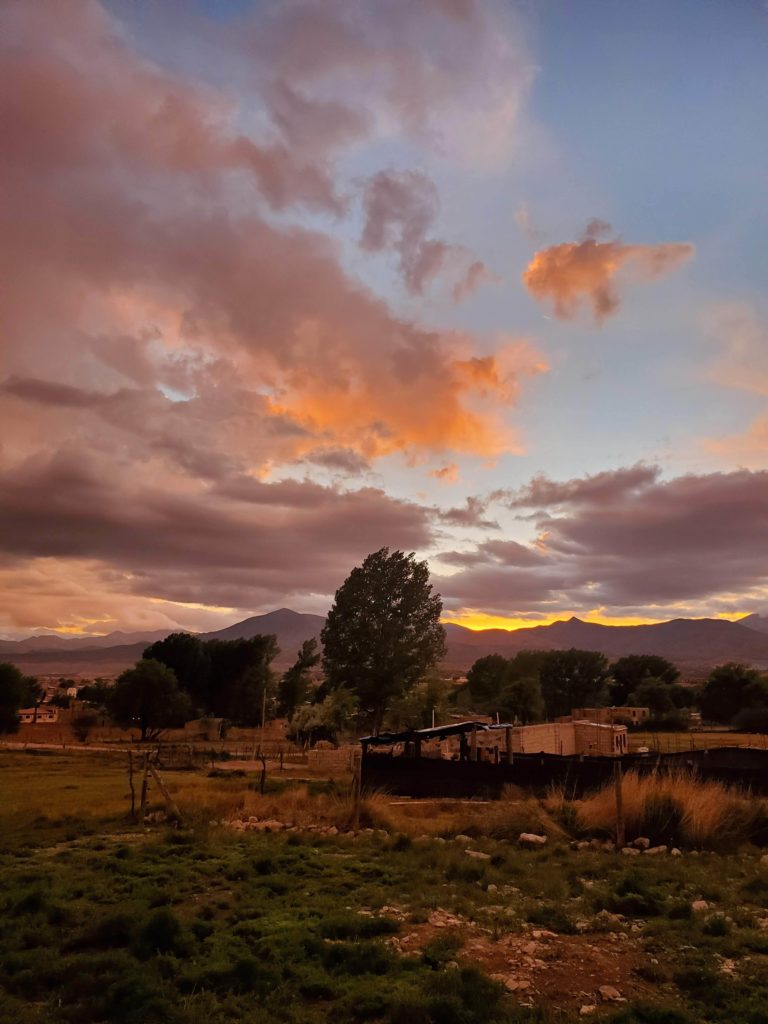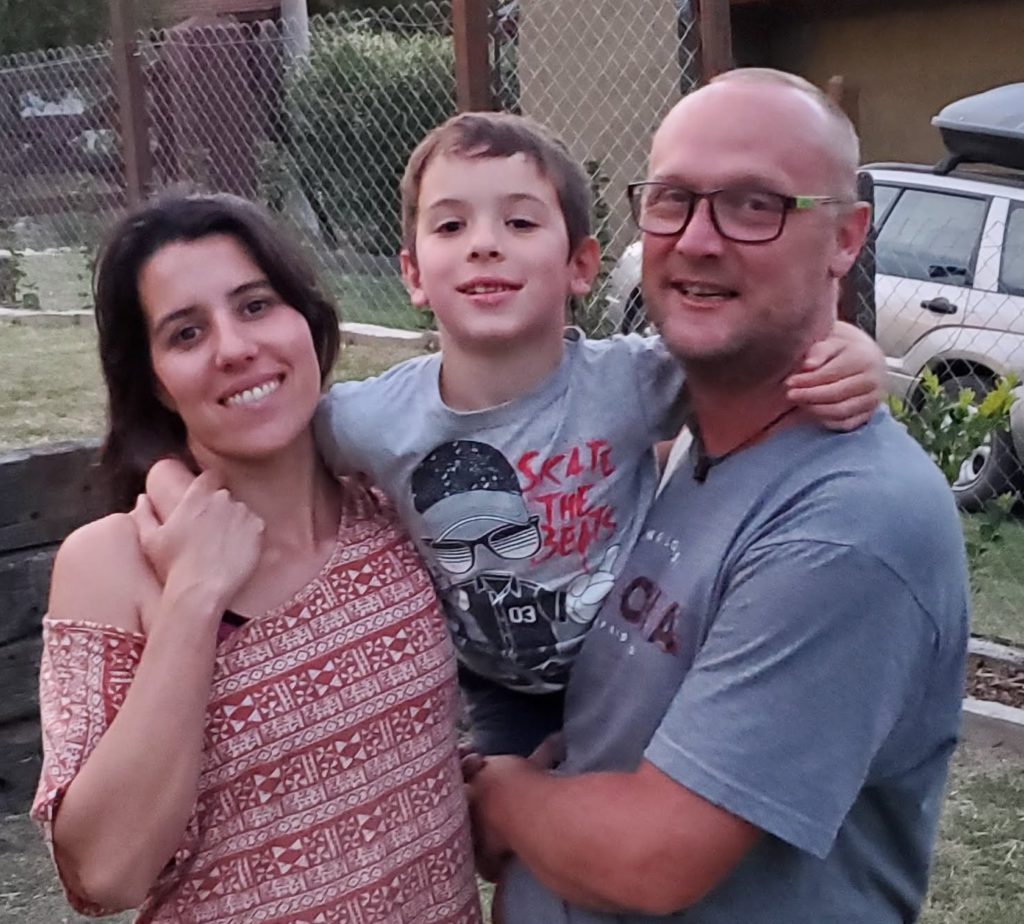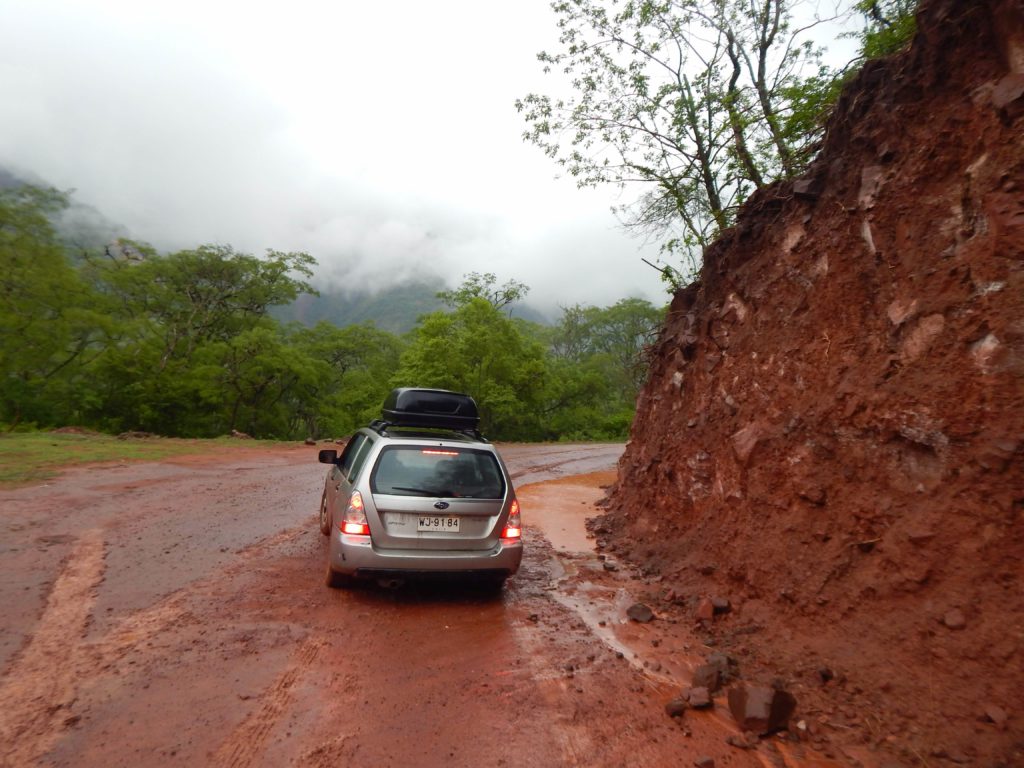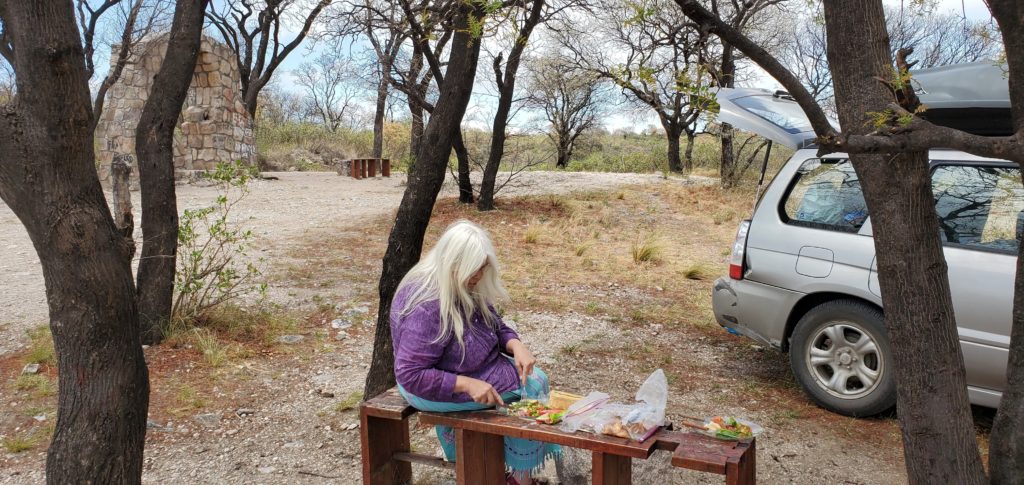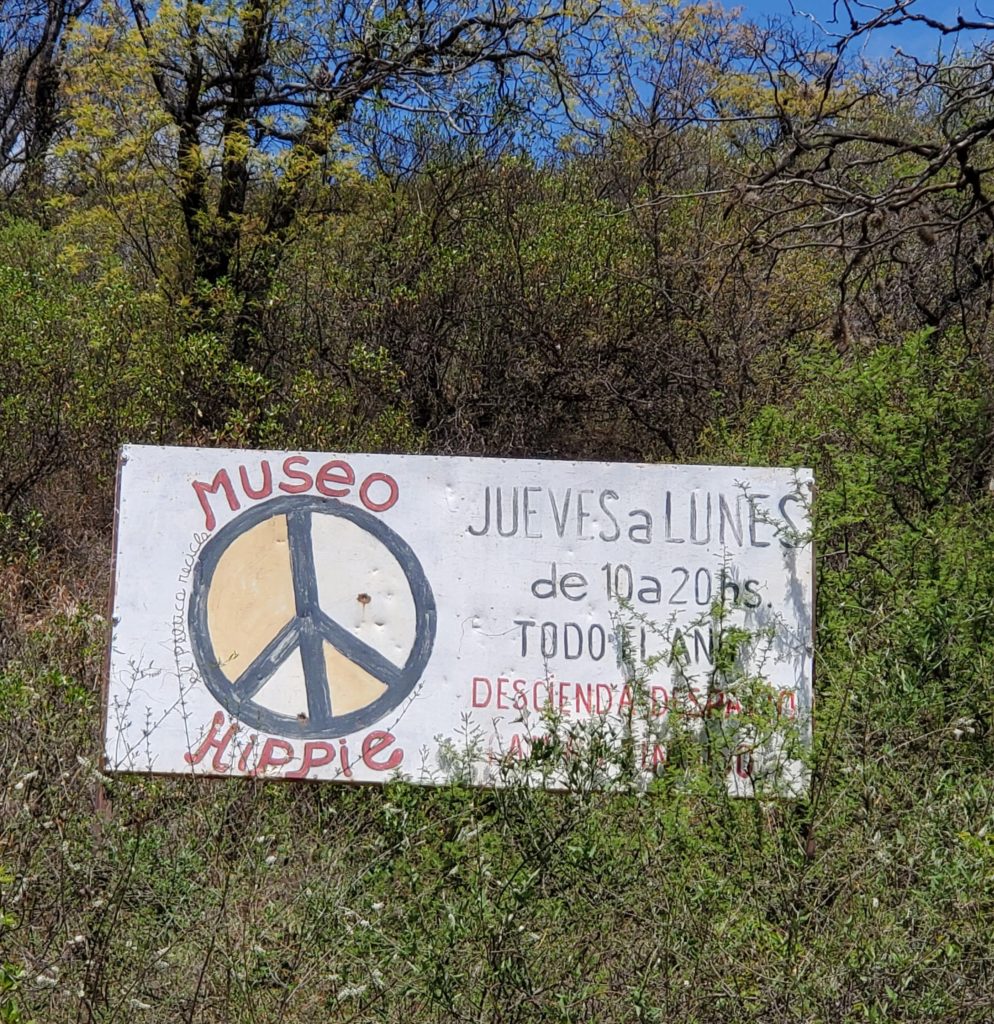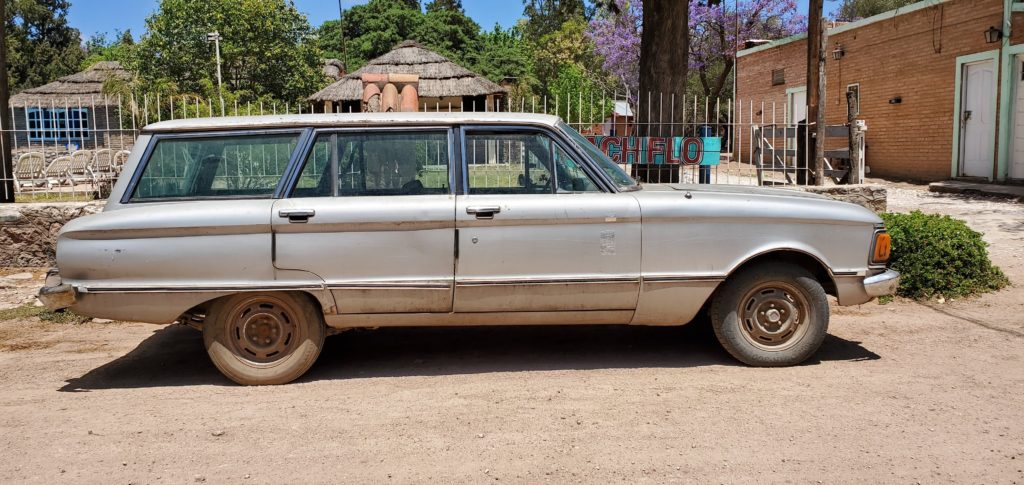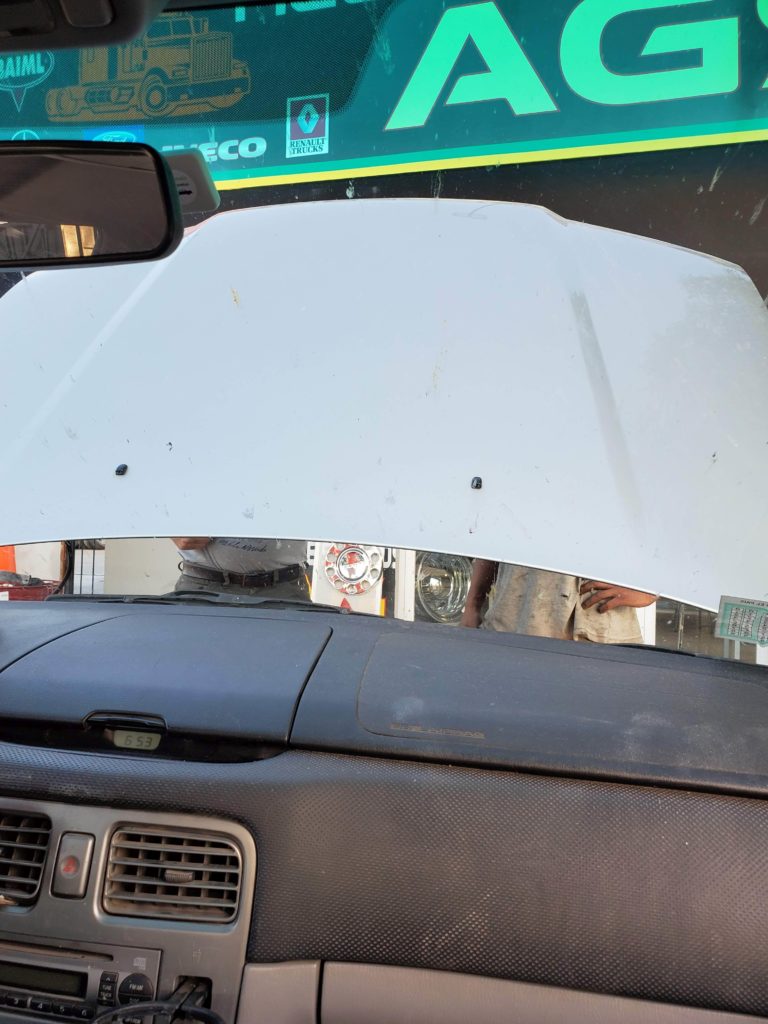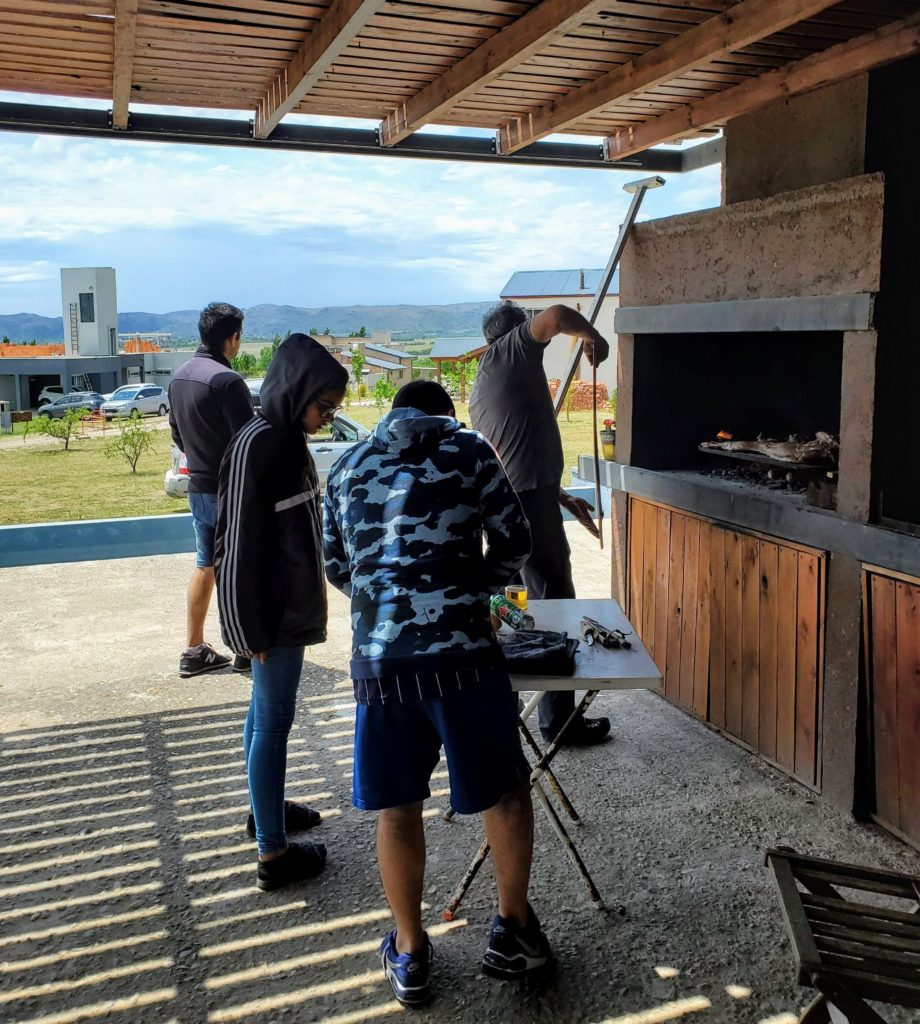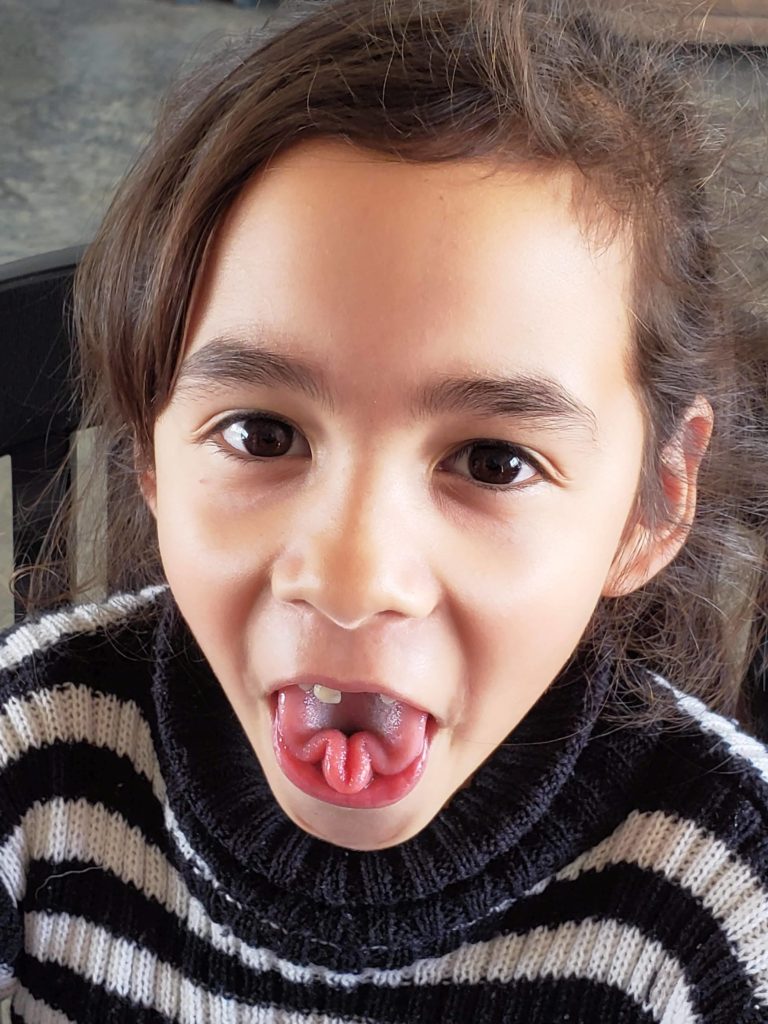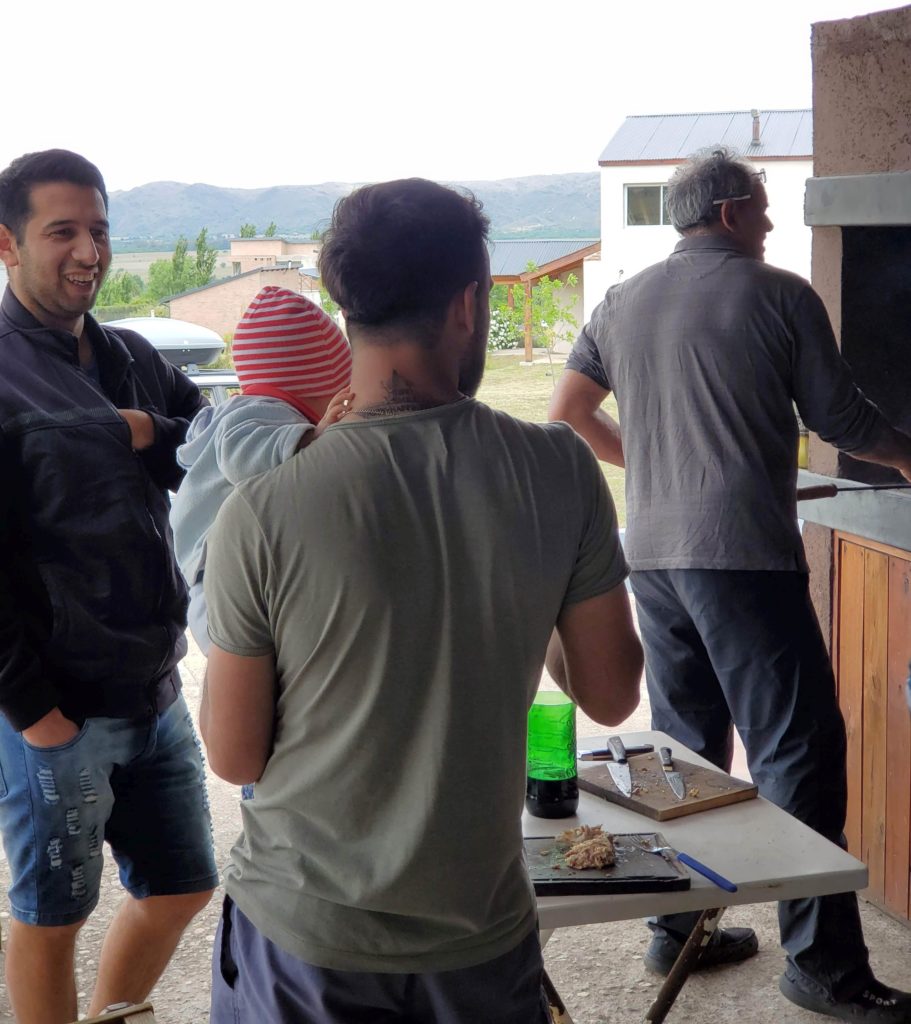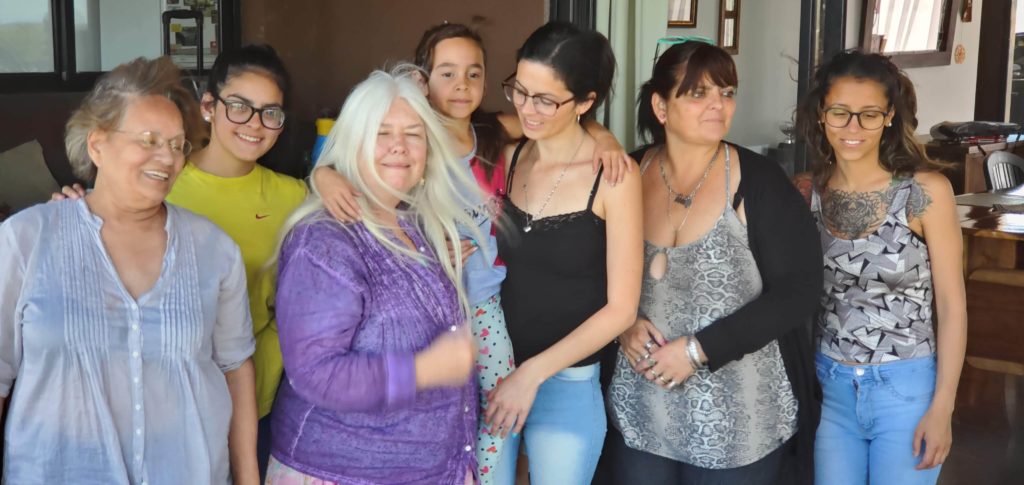Prior post: http://blog.bucksvsbytes.com/2019/12/15/south-america-by-subaru-19-11-05-disappointment/
[NOTE: To enlarge any image, right click it and choose “Open image in New Tab” or similar.
Early this morning, I check the steering fluid level under the hood, because inadequate hydraulic fluid could cause the steering symptoms we’re seeing. The level seems to be at the marked line on the reservoir, although it’s hard to see clearly. This is worrisome, because loss of fluid would be a simple fix. Instead, I have to consider the possibility that the steering pump is failing, which could be a major problem in a nation where Subaru factory parts are virtually unavailable.
We pack the car and vacate the impressively named but very economical Cabañas El Reposo de Mandinga, cross the bridge into Humahuaca, and find some parking along a narrow side street. While I wait in a long line (in the shade) for the town’s only set of ATMs, Susan checks out some of the tourist shops and works her way up a bright, hot, long, wide set of steps from the town square to the elaborate monument at the top.
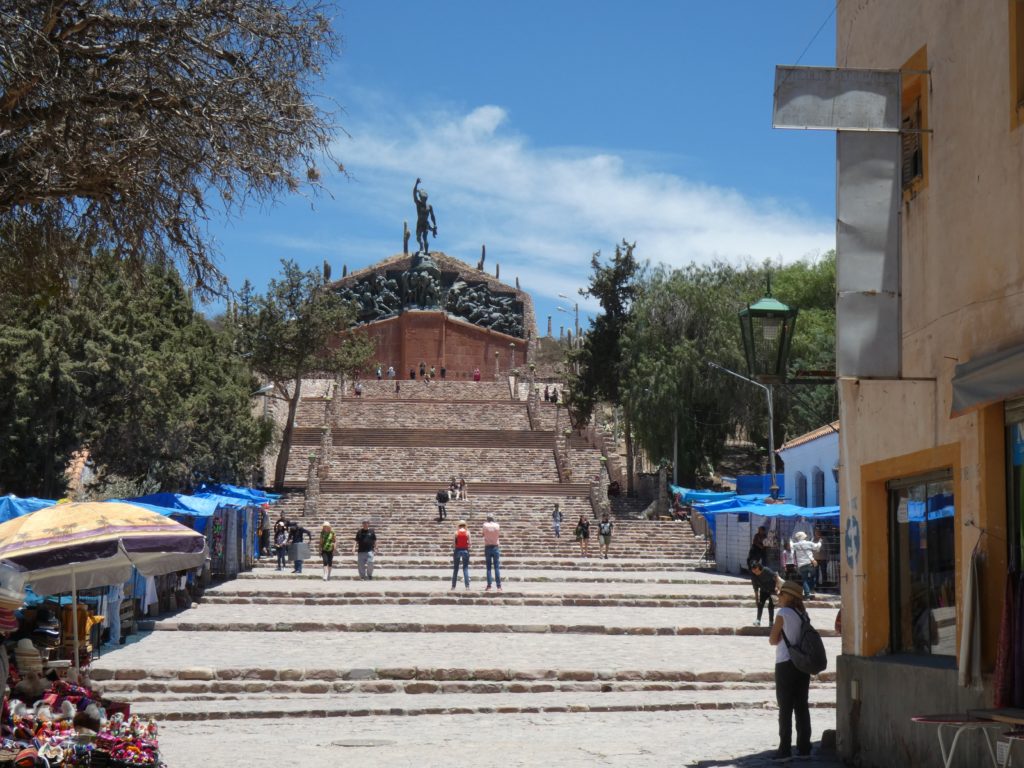
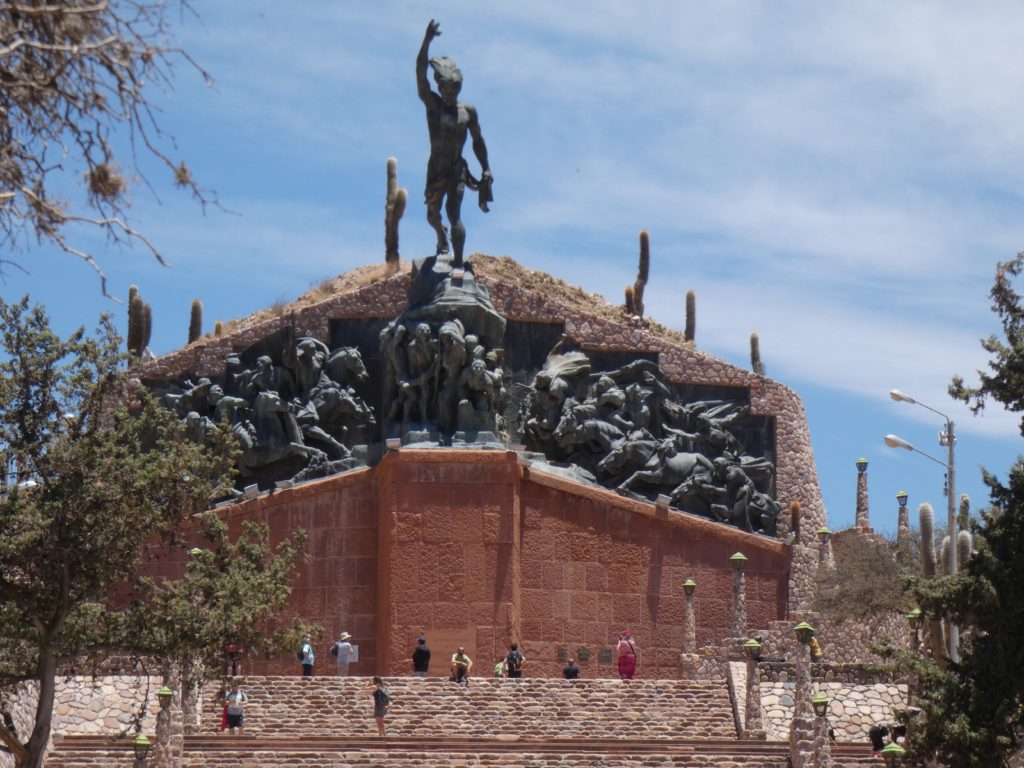
We’re noticing that the residents of this relatively remote portion of northern Argentina often bear a physical resemblance to Bolivians. The border is 50 miles to the north and it seems visually evident that many of the people here share more of their heritage with indigenous Bolivia than the more European Argentina that extends 1,600 miles to the south.
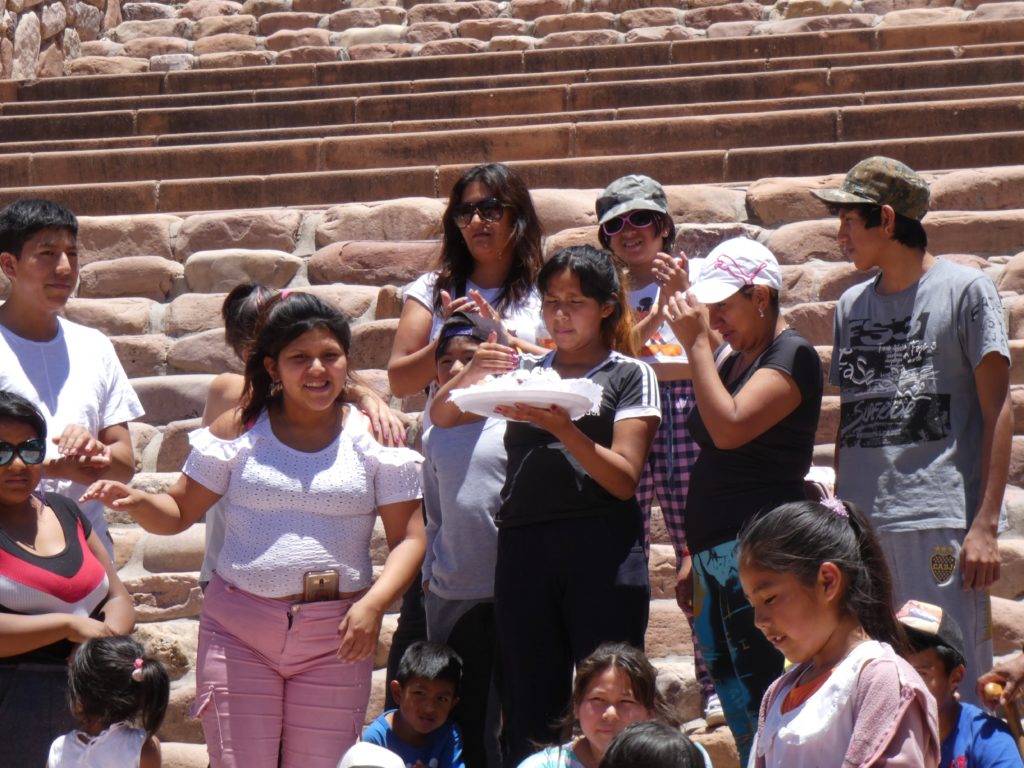
Even early in the day, the sun is brutally hot so we’re soon on the move, heading south on the same road we came up yesterday. Since we’re unexpectedly passing Pumamarca a second time, we make the short detour again and Susan hits some of the hundreds of shops and stalls searching for gifts for her enormous family.

I play my usual role of cockroach/translator, keeping her in sight while scurrying through any unavoidable stretches of sun from one shady spot to the next until she beckons for language assistance. In one shop window, Susan is entranced by a cat with two different color eyes.

We grab lunch just before all the restaurants close for the afternoon and head out of town.

From Pumamarca it’s a long slog south. Since the steering problem isn’t very noticeable on the highway (where there are no sharp corners), we decide to avoid searching for a suitable mechanic along the way and try to make it 250 miles back to Tucumán, a small city, where there will be more resources. We text Silvia asking if it’s ok to arrive back at La Providencia at 10:30 PM and she immediately assents.
Since we just drove this route yesterday, we have no great incentive to make scenic stops, although I continue to marvel at the abandoned railroad that used to connect Bolivia to San Miguel de Tucumán, almost 400 miles to the south. This line was part of the route followed by Paul Theroux in the 1970s and described in his book, The Old Patagonian Express, but left to deteriorate since 1993 (the railroad, not the book). Theroux’s travel books, including this one, are widely renowned and he’s a compelling writer but, as a traveler myself, I find him unbearably cynical and contemptuous. Many years ago, I started underlining all the negative statements in Patagonia Express. I ran out of ink in the second chapter. He claims to love traveling yet he seems to dislike almost everyone and everything he encounters. Why bother?
The railroad right of way parallels our highway, In some places, it looks like a functioning line, but every few miles the rails suddenly disappear for a while, or you see the track plunge into a big sand dune, or there’s a missing bridge.

At the same time, you pass unused stations and freight cars stranded on their segment of remaining rails.

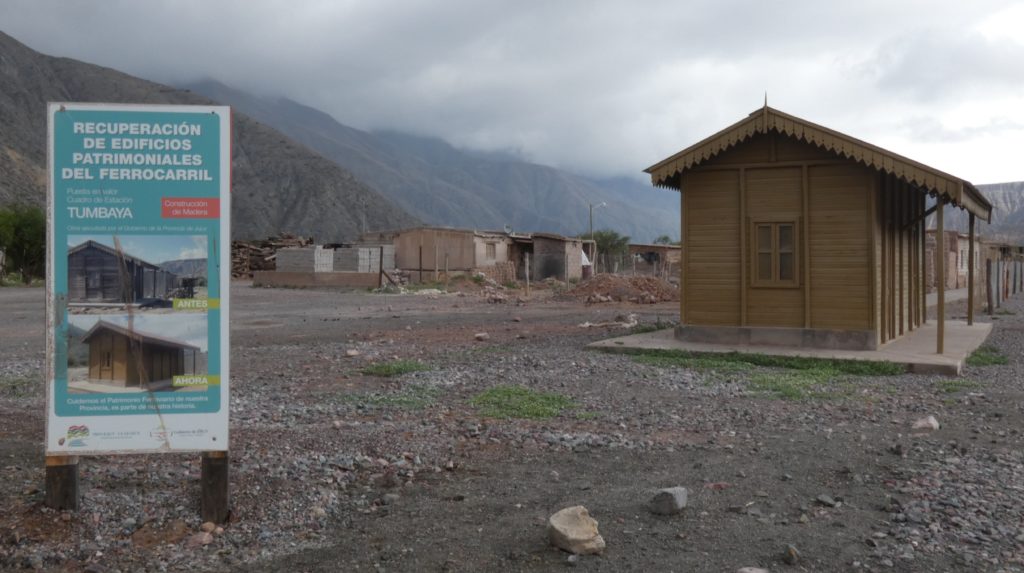

Yet, hope springs eternal: In the absence of action from the federal government or private railroad companies, the Jujuy provincial government has undertaken to rebuild and reactivate 230 miles of the route as a tourist attraction. They’ve borrowed a lot of money and track work has begun but progress is excruciatingly slow, We did pass one billboard proudly announcing the delivery of ballast rock for 4 miles of track, but no sign of the ballast itself.
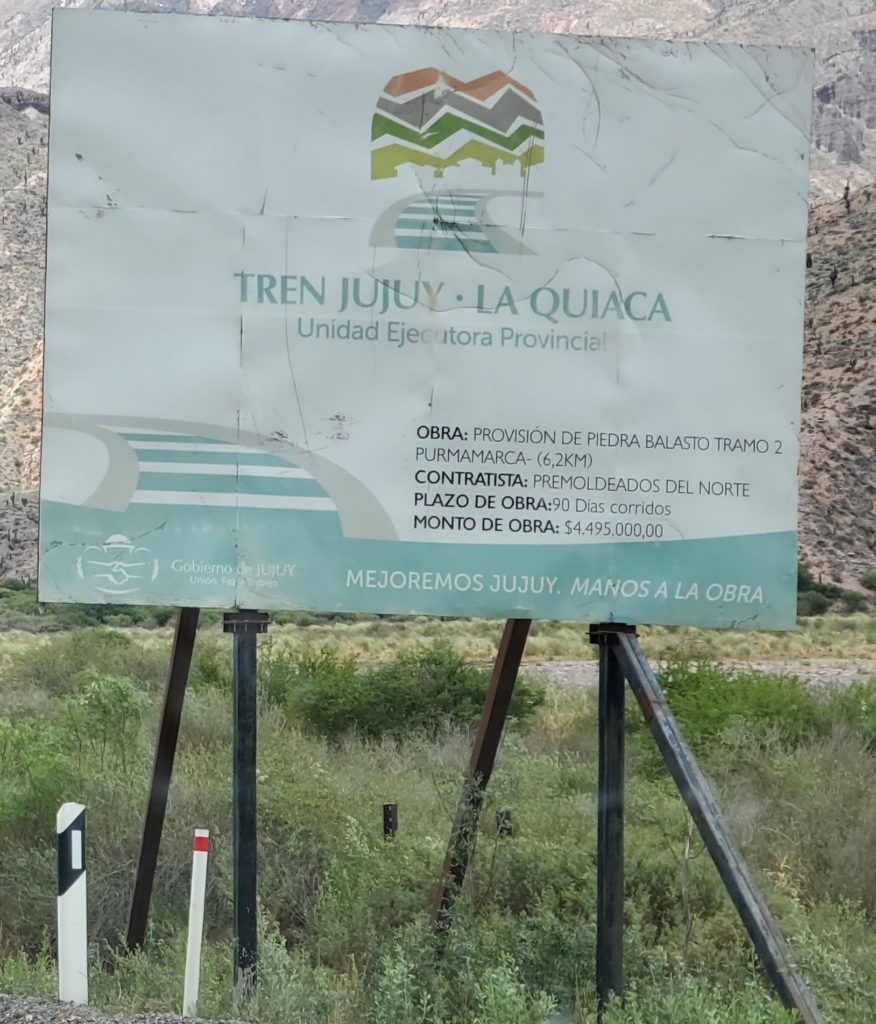
It would be great to see the scenic route functioning again but I have my doubts that large numbers of tourists will abandon tour buses and vans in favor of riding the rails.
The last 220 miles of our day’s drive is the same flat, monotonous scenery we traversed yesterday in the opposite direction and it’s with great relief that we reach La Providencia B&B after 10 PM with the steering still functional and a warm “welcome back” from Silvia. It’s not long before we’re sound asleep in our same comfortable room.
Next post: http://blog.bucksvsbytes.com/2020/01/01/south-america-by-subaru-19-11-07-we-dodge-a-bullet/





